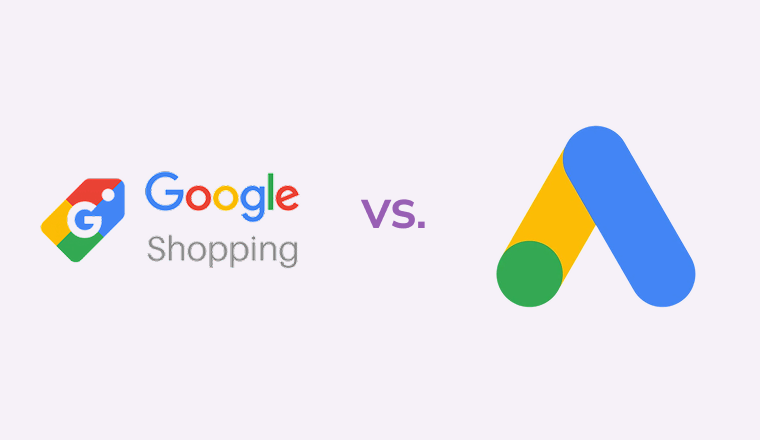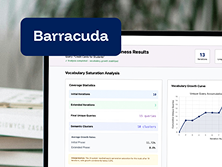Home / Blog / Standard Shopping vs Performance Max: When to Use Each in Google Ads
digital marketing Go Fish Digital Integrated Marketing Strategy
Standard Shopping vs Performance Max: When to Use Each in Google Ads

Published: October 01, 2025
Share on LinkedIn Share on Twitter Share on Facebook Click to print Click to copy url

Contents Overview
Why Standard Shopping Still Matters
Performance Max (PMax) has become Google’s flagship campaign type for eCommerce and lead generation advertisers. By combining automation with access to Google’s full inventory, it promises reach and efficiency. Yet PMax is not always the best choice. Some businesses struggle to gain momentum because their conversion volume, product type, or creative assets do not align with how PMax is designed to work.
That does not mean your account is set up incorrectly, or that you are ignoring Google’s best practices. It may simply mean that your business does not fit PMax’s mold. Standard Shopping campaigns still have a place, offering more control, cleaner traffic, and in many cases, stronger return on ad spend (ROAS).
Where Performance Max Falls Short
PMax can deliver excellent results for advertisers with consistent conversion volume, strong creative assets, and diversified product catalogs. But there are limitations:
- Conversion volume requirements: Google recommends 30 conversions per month, though some campaigns perform with 20. This excludes advertisers with longer sales cycles, such as furniture or industrial equipment.
- Scaling challenges: Without consistent conversion data, campaigns struggle to scale, and automation can misfire.
- Chasing large conversions: With bidding set to Maximize Conversion Value, a single large order can lead PMax to over-allocate spend, wasting budget on poor-quality clicks or low-value placements.
- Creative asset gaps: PMax depends on image and video assets. While Google auto-generates creative, the quality often falls short of brand expectations, especially for video.
- Lead quality issues: Many lead generation advertisers see spam, bots, or unqualified leads due to limited control over targeting.
- Limited control over channel allocation: PMax can spread spend across Search, Shopping, Display, Discover, YouTube, Gmail, and Maps. You cannot prioritize where budget is allocated, leaving spend unpredictable.
These challenges highlight why PMax is not universal. For some accounts, Standard Shopping delivers stronger outcomes.

Why Standard Shopping Can Be More Effective
Standard Shopping campaigns provide advertisers with far more levers to manage and optimize performance. Unlike PMax, which automates heavily, Standard Shopping puts control back in your hands.
- Greater control over bids and targeting: Adjust bids by device, location, and schedule to align spend with your best-converting audiences.
- Negative keywords and search query funneling: Standard Shopping allows up to 20 negative lists per campaign with 5,000 terms each, giving more filtering power than PMax. Search query funneling lets you bid higher on proven converting terms and lower on broad, top-of-funnel terms.
- Automation on your terms: While Standard Shopping does not use the same machine learning engine as PMax, you can still apply automated bidding strategies like Target ROAS or Maximize Clicks to improve efficiency.
- Spend consistency: Standard Shopping spend is easier to manage. By adjusting bids, budgets, or ROAS targets, you can keep campaigns predictable. PMax spend often fluctuates based on demand signals or Google’s algorithmic confidence.
When to Use Standard Shopping Instead of PMax
PMax is best when you have high conversion volume and plenty of creative assets. Standard Shopping is better in cases where:
- You cannot drive at least 20–30 conversions per month. Without this minimum, PMax struggles to learn effectively.
- You rely on offline conversions or need higher-quality traffic. Standard Shopping helps you control queries and filter out unqualified clicks.
- You want granular control over spend. For seasonal or regional businesses, being able to prioritize devices, times, or geographies is critical.
- Your product mix has high-ticket or low-frequency items. PMax tends to underperform when average order values are high but purchase frequency is low.
For practical setup guidance, Google Ads provides step-by-step instructions on how to create a Standard Shopping campaign.
Making Standard Shopping Successful
To maximize results, Standard Shopping requires thoughtful setup and ongoing optimization.
- Set clear goals: Decide whether you are optimizing for ROAS, CPA, or qualified traffic volume.
- Use query funneling: Group campaigns by query intent. Bid higher on terms with proven conversion history, while applying lower bids to discovery-level queries.
- Leverage negatives aggressively: Protect budgets by excluding junk terms, unqualified modifiers, or consumer language if you are B2B.
- Layer audience signals: Apply remarketing and in-market audiences as bid modifiers to refine targeting.
- Balance automation with control: Test Target ROAS bidding to scale efficiency, but adjust manually if performance drifts.
- Review search terms regularly: Use search query reports to refine targeting and maintain account hygiene.
For additional context, Google provides an overview of Performance Max campaigns, which helps illustrate where automation differs from the control offered by Standard Shopping.
FAQs About Standard Shopping vs Performance Max
Is Performance Max better than Standard Shopping?
Not always. PMax works well for accounts with consistent conversion volume, strong creative assets, and broad product catalogs. Standard Shopping is often better when you want more control, need to filter traffic with negatives, or cannot hit the 20–30 monthly conversions PMax requires.
Can I run Standard Shopping and Performance Max at the same time?
Yes, you can. Google treats both campaign types as eligible in the auction. There isn’t a strict hierarchy where PMax automatically overrides Standard Shopping. When ads from both campaigns qualify for the same auction, the one with the higher ad rank will serve. Ad rank is determined by a combination of bid and quality signals.
If you want Standard Shopping to play a stronger role, you’ll need to structure campaigns carefully, use exclusions to control overlap, and monitor performance closely.
How many conversions do I need for Performance Max?
Google recommends 30 conversions per month, though some accounts perform with as few as 20. If your campaign cannot hit that threshold, Standard Shopping may deliver more stable results.
Does Standard Shopping still use automation?
Yes. Standard Shopping allows bidding strategies like Target ROAS and Maximize Clicks, which apply automation to help improve performance. The difference is you still control elements like bids, schedules, devices, and negatives.
Which campaign type gives better lead quality?
For many lead generation advertisers, Standard Shopping delivers cleaner traffic because it offers more granular control over queries and targeting. PMax can sometimes drive unqualified or spam leads due to its broad reach.
Standard Shopping vs PMax: Key Takeaways
Performance Max is powerful, but not for every advertiser. If your account cannot deliver the consistent conversion volume or creative assets PMax relies on, Standard Shopping provides a proven alternative. It offers more control over spend, higher-quality traffic, and the flexibility to fine-tune campaigns by device, location, and query.
Brands that understand when to lean into Standard Shopping versus PMax not only protect their budgets but also unlock new paths to scalable growth.
Need help choosing the right campaign strategy? Talk to Go Fish Digital about optimizing your Google Ads mix.

About Brian ONeil
MORE TO EXPLORE
Related Insights
More advice and inspiration from our blog
Negative Keywords in Google Ads: The Key to Scalable Campaigns
Learn how negative keywords improve Google Ads performance. Build master lists,...
Broad Match Google Ads: Benefits, Best Practices, and AI Visibility
Broad match in Google Ads has evolved. Learn best practices to...
Thomas Delsignore| September 19, 2025
Top Google Ads Mistakes to Avoid in Q4 (And How to Fix Them)
Are hidden Google Ads mistakes draining your budget? Learn how to...
Kimberly Anderson-Mutch| August 27, 2025





